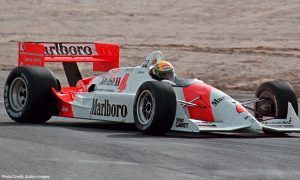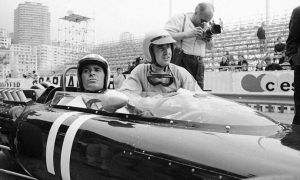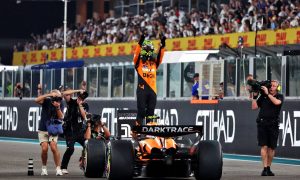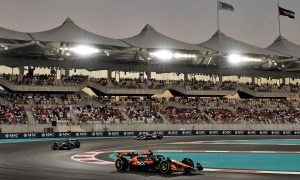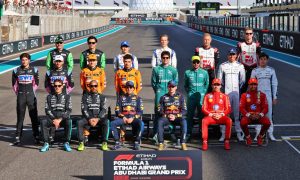
Baku is often described as a blend of two extremes - Monaco and Monza - thanks to the old city's narrow and twisty sections that are linked together by long straights followed by heavy braking zones.
But unlike Formula 1’s crown jewel, Baku requires a set-up balance weighted more towards straight-line speed than aerodynamic efficiency as, contrary to Italy’s Temple of Speed, there are no high-speed corners around Azerbaijan’s 6.0km street circuit.
For this reason, most teams are sacrificing a bit of downforce this weekend to gain velocity by running lower-downforce rear wings, although not the trimmed-out variety that one would encounter at Monza.
Baku’s speed trap is located approximately at the mid-way point of the track’s long 2.2km main straight, just before the pit entry.
But drivers frequently gain significantly more velocity a little further down the road with the help of a slipstream, a very powerful tool in Baku.
Aston Martin’s Fernando Alonso topped the speed trap readings in qualifying with a top speed of 325 km/h. But as usual, our interest is looking at the numbers of F1’s front-runners to help give us a few pointers for race day.
For starters, poleman Charles Leclerc was among the slowest down the straight, as were his Ferrari teammate Carlos Sainz and Red Bull’s Sergio Perez, both of which qualified among the top four.
Oscar Piastri, who clocked in second in Q3, was only marginally quicker. However, among F1’s top four teams, McLaren is running the most loaded rear wing in Baku.
This element should provide Piastri with better grip and therefore perhaps superior tyre management in Sunday’s race relative to his Ferrari and Red Bull rivals.

However, Mercedes trumps its fellow top competitors in terms of top speed, with George Russell and Lewis Hamilton among the four quickest cars down the straight.
This achievement coupled with Russell topping the long run simulations in FP2 tells us that Mercedes should be a force to be reckoned with in Sunday’s race, even despite Russell and Hamilton’s lower grid positions (P5 and P7 respectively).
That’s the theory. But as usual in Baku, from the commotion at the first corner to the inevitable Safety Car periods to the vagaries of tyre degradation and strategy, jeopardy and chance will have their say.

Keep up to date with all the F1 news via Facebook and Twitter



